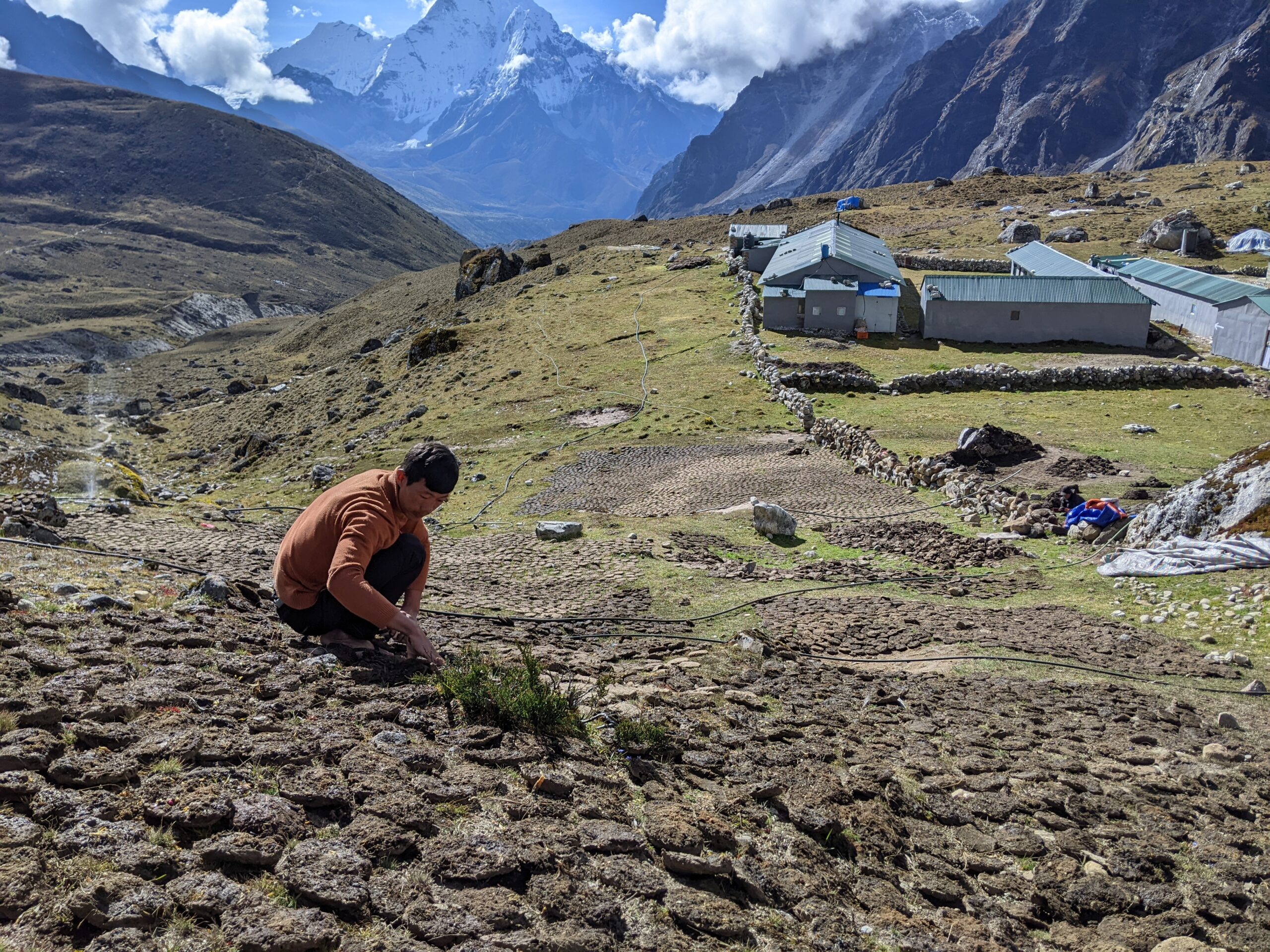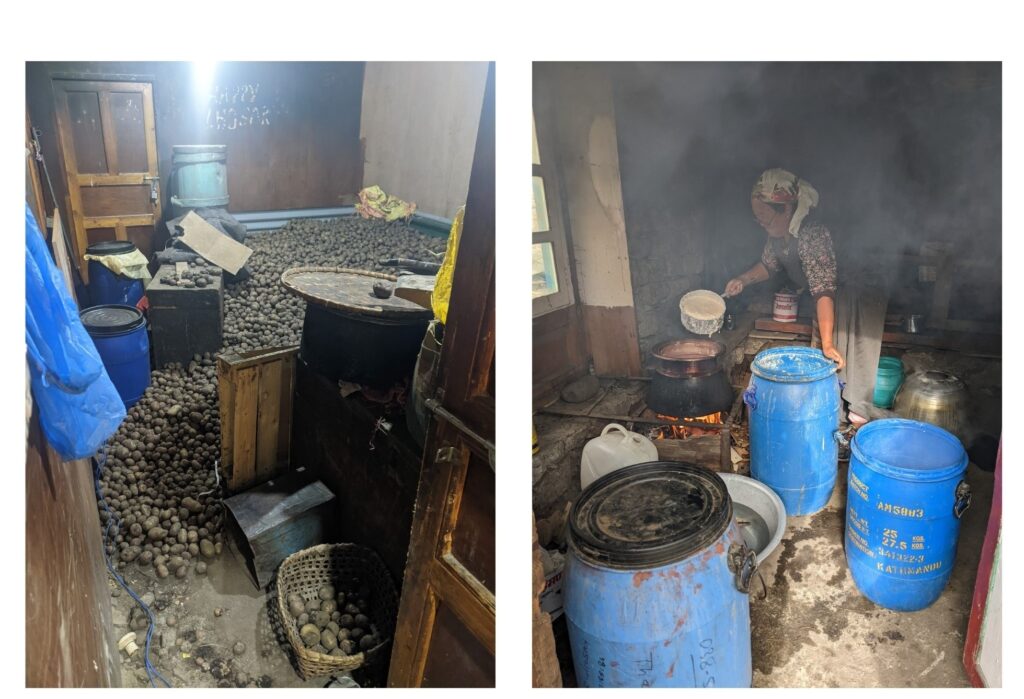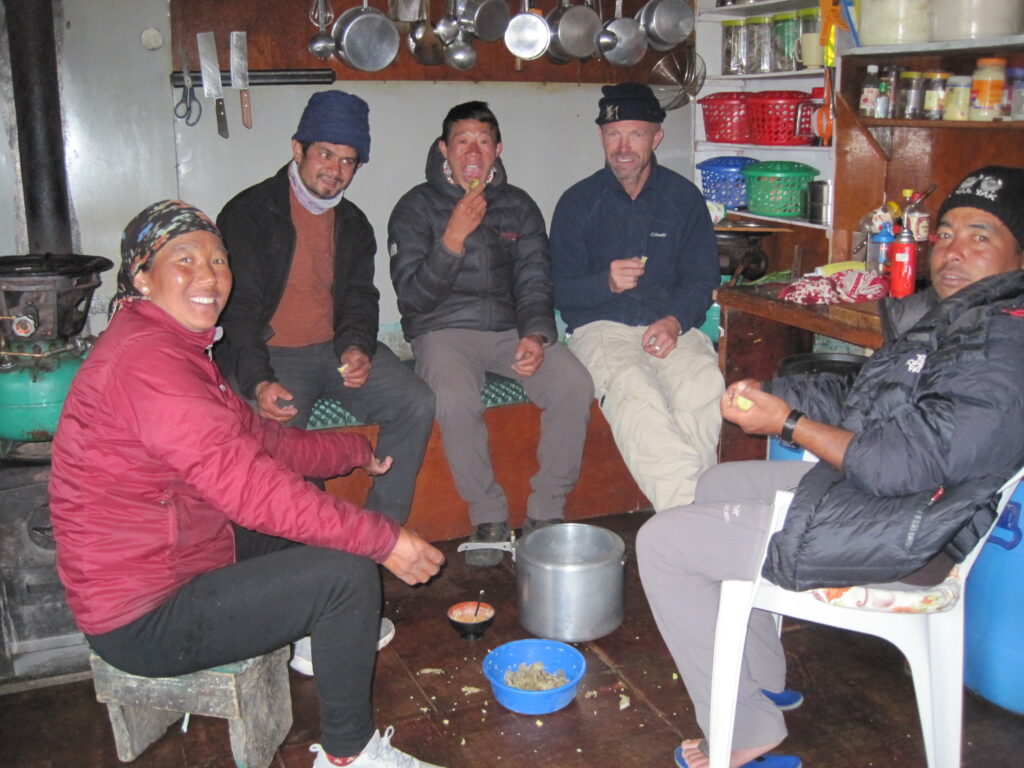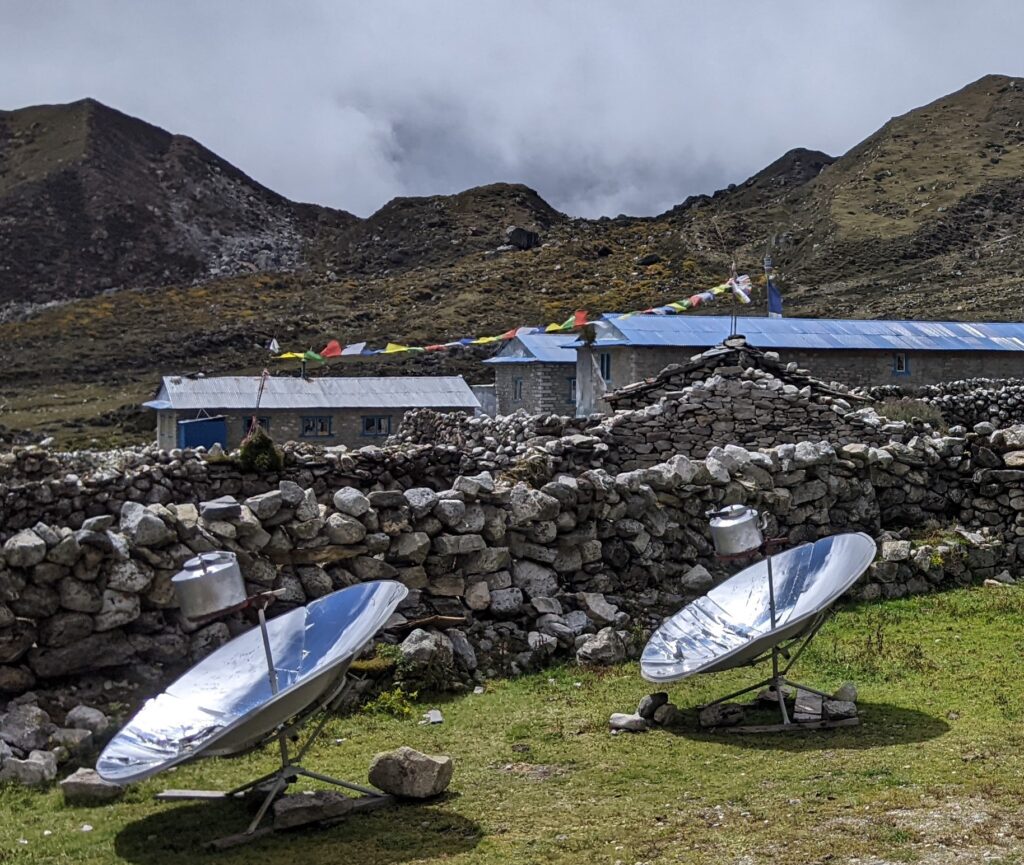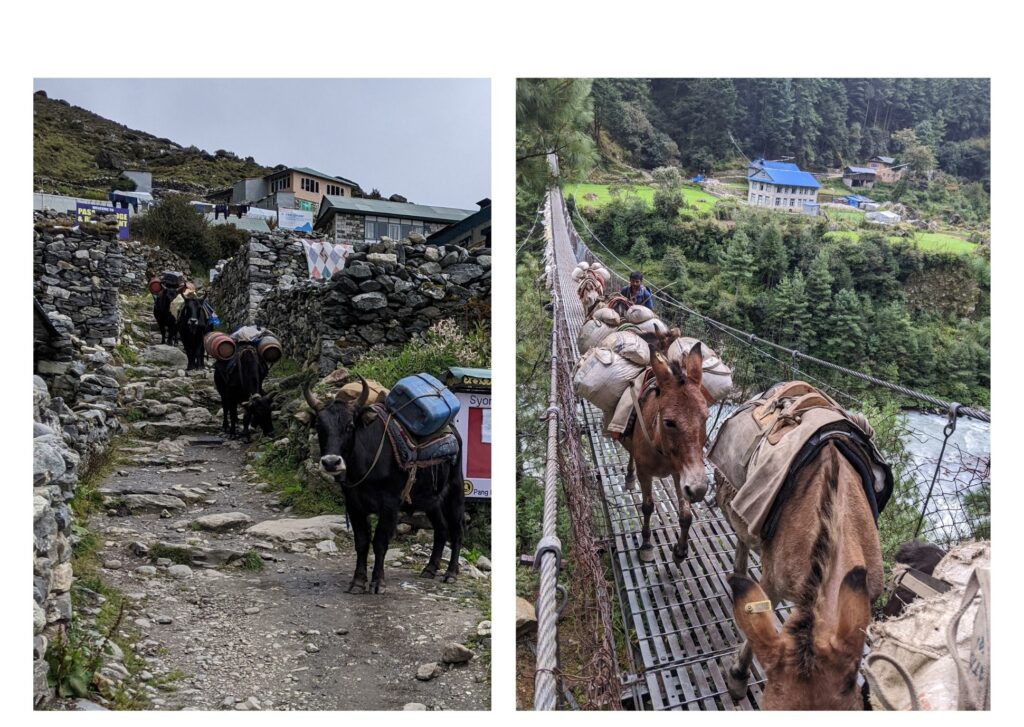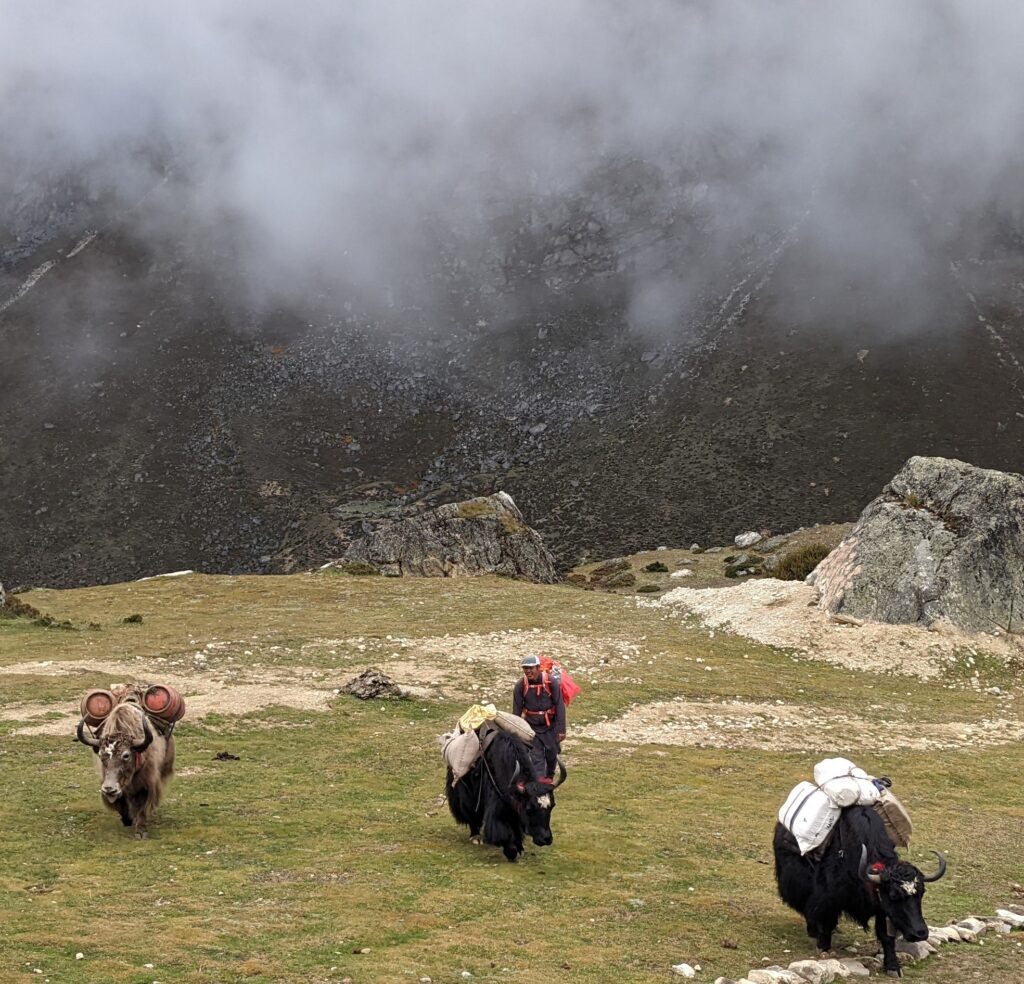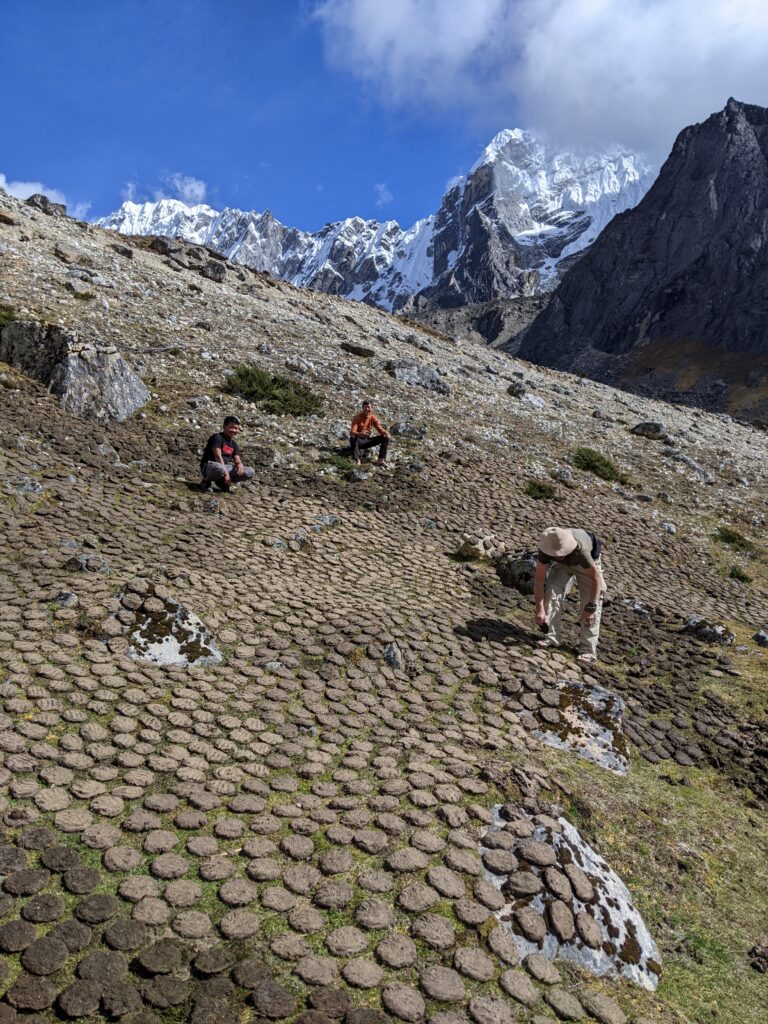Image: Dev at Dzongla on yak dung duty
Post 4 of 6
29 September 2022
Potatoes are the principle crop of the Sherpa people. The altitude and climate of the Khumbu Region means that it is difficult to harvest most vegetables and crops or to provide feed for livestock. The region relies heavily on produce grown further down the valley and brought up on the back of mules, yaks or horses. The Sherpa people are Buddhist and therefore do not kill animals themselves. Meat is ‘processed’ outside the national park and is generally carried by a human to Namche Bazaar for sale at the market.
Most villages have small fields of potatoes scattered throughout the houses, and fenced fields squeezed into every potentially arable space around the village. People generally farm the potatoes in groups and by hand. Compared to Australian potatoes, Khumbu potatoes are pretty small in size.
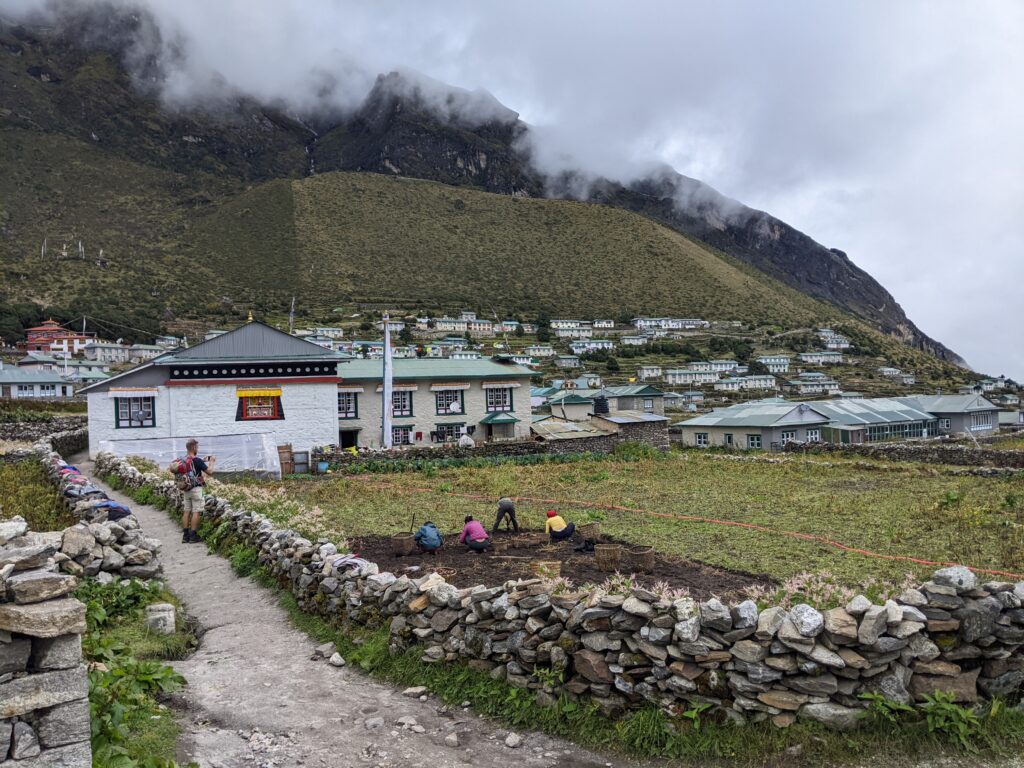
Some baskets are for whole potatoes, some baskets are to collect the potatoes that are accidentally chopped up when digging into the soil.
Potatoes can be enjoyed at every meal. You can have potato with rice, potato pancake, potato with vegetables, potato soup, potato with noodles, potato chips, potato with egg and potato with potato. Potatoes are also a social event – sharing a pot of potatoes in the kitchen to keep warm, you peel the skin and smear a tasty paste of ground spices on it. Our crazy suggestion of eating the skin as well was dismissed constantly!
In Thame, our host talked us through the ‘brewing’ process for Chyang – a fermented rice drink (image above). It takes about 2 weeks to brew, moving from blue pot to blue pot to copper pot. The alcohol content is reasonably low and is considered a mild beverage by world alcohol standards. Amusingly our host and her family refused to drink it saying it was potent and unhealthy.
Solar power drives the Khumbu Region. There are no electricity poles and wires up high in the mountains! The monsoon brings thick layers of cloud, so charging the solar batteries can be a challenge. One place we stayed had been without sun for 26 days which meant the building lights were turned off at 7:30pm. In Gorak Shep, a tourist was willing to pay USD200 to have his battery pack charged, but no one in the village had enough power available to do even that!
Traveling in the shoulder season meant that we were often the only guests in the lodges and were welcomed into the routine of daily life including folding serviettes, flipping yak dung patties, eating potatoes and stoking the fire. We were also very good at relaxing and having a chat.
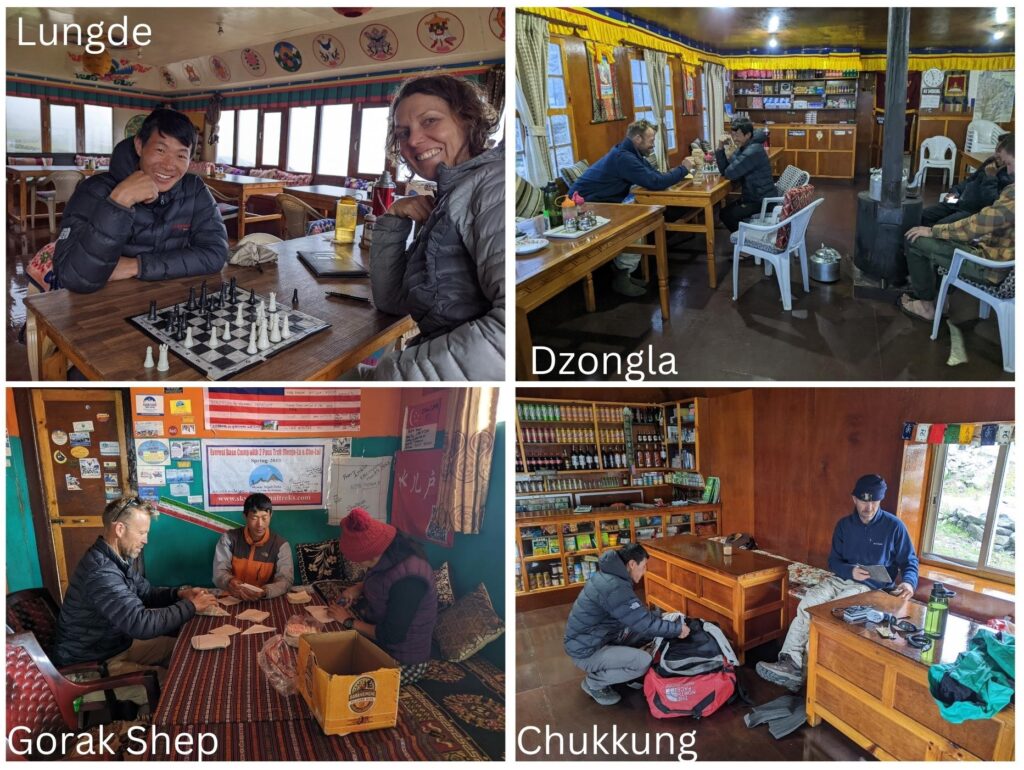
I maintained a routine of porridge for breakfast, vegetable fried rice for lunch and dahl baht for dinner for our three weeks of walking. It was the perfect trekking fuel. The vegetables mostly consisted of potato with a side of potato, but the occasional carrot and something from the spinach family would make a surprise appearance on my plate which made me very happy. When an apple was available, it was expected that it be shared with those you were dining with as an apple was such a precious and heavy commodity to be transported so high up in the mountains.
A regular sight throughout the trek, were the animals and humans carrying huge and weighty loads. Some men can carry up to 140kg on their own! We saw sheets of tin and plywood on the back of men, making slow but constant progress up the mountain paths. Bags of potatoes, gas bottles, wads of packet noodles and boxes of snickers were piled high on the yaks, mules and horses. It was amazing to watch the animals go across the long suspension bridges and navigate the rocky paths and clumps of tourists calmly and routinely. We met a mule on our last day which was taking itself down the mountain to collect its cargo – there is only one path and it is a trip the mule would do very regularly, so I assume it got home ok.
We had included a few extra days in our itinerary as a buffer in case the weather, altitude or any health issues hampered our progress. Fortunately none of those factors slowed us down, so it was with great pleasure that we decided on Day 13 to have a real “rest” day at the teeny tiny settlement of Dzongla to enjoy the sunshine, do some washing and help our host Pasang with his chores.
Dzongla is very isolated, being at least 2 days walk to market. Dzongla sits at an altitude of 4860m meaning the vegetation is very sparse with absolutely zero wood available to fuel the fires for cooking and heating. To make fuel, the locals collect yak dung from the hills around the village and from the designated yak farms. They then mush up the dung and make pancake sized patties that they sit out to dry in the sun to then use as fuel for the fires. As with other villages in the Khumbu Region, Dzongla receives a thick dump of snow throughout the cooler months. Therefore, to keep the tourists fed and warm, each Lodge needs to collect over a tonne of yak dung patties before the snow arrives each year. We spent the morning of our rest day helping Pasang turn his patties – fortunately the patties were mostly dry so the work was more relaxing than dirty or stinky. It was nice to be useful.
